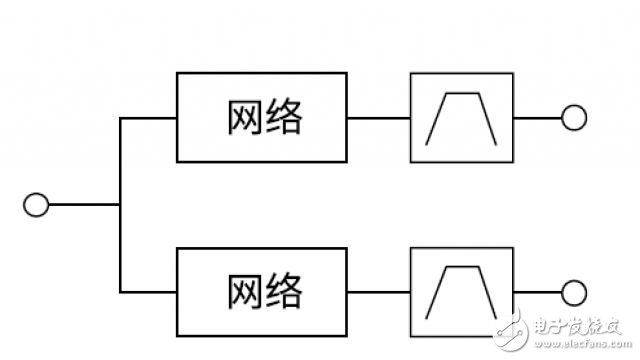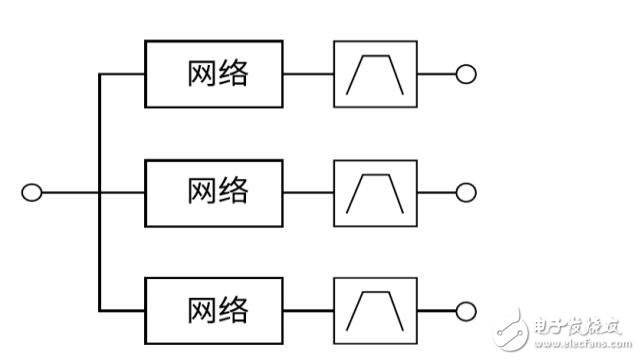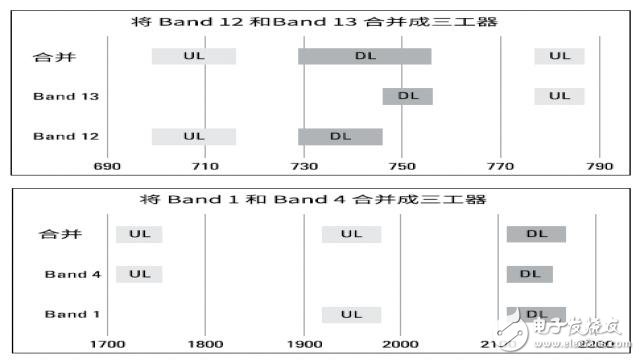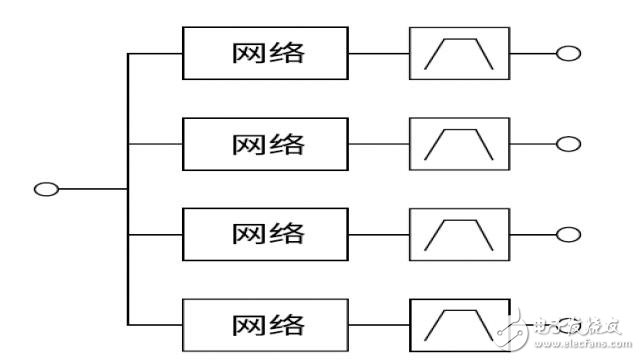Duplexers, triplexers, and quadruple all belong to a class of devices, which are collectively referred to as "multiplexers." The multiplexer has a single input port and multiple output ports. A multiplexer is a set of non-superimposed filters that are combined to ensure that they do not load each other and that the outputs are highly isolated.
Discover the duplexer
The duplexer consists of two (transceiver) filters combined to share a common node (antenna), allowing the device to transmit (Tx) and receive (Rx) simultaneously.

Diplexer
Duplexers are commonly used in frequency division duplex (FDD) radio applications where one filter is the transmit filter and the other is the receive filter. The duplexer is designed to ensure that the passband of each filter does not load another filter. In addition, it is important that the transmitted signal appearing in the output of the receive filter requires significant attenuation. This high level of isolation is required to ensure that the signal does not cause overdrive at the receiving front end. This isolation is often referred to as transmit and receive isolation at the transmit frequency, with common values ​​above 55 dB.
In addition, high-level transceiver isolation is required at the receiving frequency. This is to prevent the wide offset noise (reception frequency) generated by the transmitted signal from appearing at the receiver input, thereby reducing the sensitivity. The above two isolation requirements constitute "in-band isolation requirements" - the transceiver filter corresponds to the same frequency band.
Please note: Do not mix diplexers and diplexers!
A diplexer allows two different devices to share the same channel. The diplexer can be used as a normal duplexer, but a normal duplexer cannot be used as a diplexer.
2. Know the triplexer
The triplexer consists of three filters (or ports) that share a single node (or port). The triplexer's passband loading and isolation targets are the same as the duplexer. The triplexer has a 12/13 band triplexer and a quarterband triplexer.

Triplexer
In frequency division duplex systems, a common three-worker application is to consolidate board space by combining two duplexers that typically require two duplexers. At the top, Bands 12 and 13 are merged into one triplexer because the receive or downlink bands of the two bands are adjacent to each other. Therefore, the two filters are combined using a wider broadband filter to form a triple filter structure. Below, Bands 1 and 4 are merged into a triplexer because the downlink of Band 4 is a subset of the Band 1 downlink.

Combine two duplexers into one triplexer example
3. Understand the four-worker
The quadruple combines the four filters to share one node. The duplexer's passband loading and isolation targets are the same as the duplexer. The quadruple has a Band 25/4 and a Band 1/3 duplexer.
The quadruplexer allows two bands to be connected to the antenna at the same time, which is very useful for applications such as carrier aggregation (in carrier aggregation, a handset may need to receive two bands simultaneously). Quadruplexers are more complex than duplexers and triplexers because the four filters must be designed together and meet stringent cross-isolation specifications.

Quadruple
"Cross isolation" refers to the isolation between frequency bands. Recall that the duplexer requires that the transmitted signal be substantially attenuated at the corresponding receive frequency output. For quadruplexers, the transmitted signal needs to be substantially attenuated at the two receive outputs. Similarly, in order to control the noise of the receiving band, it is necessary to isolate the transmitted signal at the receiving frequency, and now the quad-worker has two receiving outputs.
When you consider all the conditions, you will find that the four workers have eight important isolations, and only two duplexers!
Description of Expandable Braided Sleeving For Cable Harness
1. Flame-retardant and halogen-free.
2.Can be cut with a common scissors without obvisous fray.
3.Softer and easier to be use on the outdoor fielad .
4. It offers durable abrasion resistance in a wide range of industrial applications.
5. The open weave construction allows an easy installation on a bundle of hoses
and cables, even if some with bulky or large connectors.
6. Totally expanded the sleeving can reach at least one point five times than the initial dimension.
7. Suitable for constructing and protecting cable harnesses or tidying cable looms.
8. Sleeve expands to allow the cables to pass through and then automatically shrinks back.
Application of Clean Cut Expandable Braided Sleeving For Cable Harness
1. Automobile wires protection
2. Structured cabling system
3.A/V cables & HDMI cables
4.Industrial hoses & tubes protection
Durability For Cable Sleeve,Specal Cable Sleeve,Grey Braided Cable Sleeve ,Wire Harness Protection Tube
Shenzhen Huiyunhai Tech.Co.,Ltd , https://www.hyhbraidedsleeve.com
